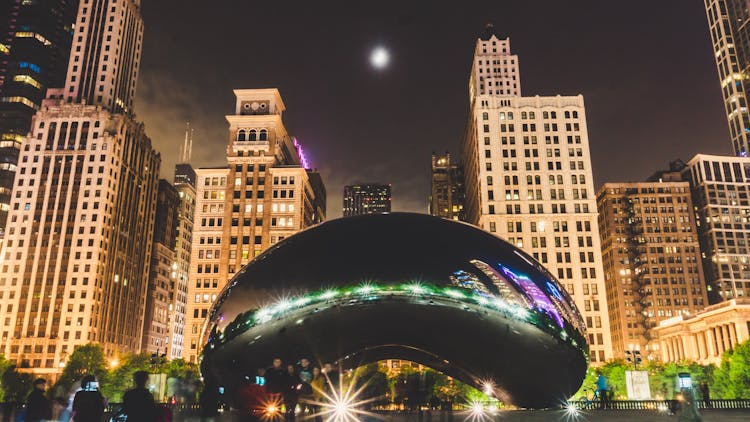All Categories
Featured
Table of Contents
The Chicago Bean
officially named Cloud Gate, stands as a testament to innovative design and public art's power to transform spaces. Conceived by British artist Anish Kapoor, this iconic sculpture was unveiled in 2004 in Millennium Park as part of a larger celebration marking the 100th anniversary of the 1893 World's Columbian Exposition in Chicago. The seamless surface of the Bean reflects Chicago's stunning skyline and the mass of cloudscapes above, offering a distorted yet enchanting perspective of the city from a myriad of angles.One of the most compelling aspects of the Bean is its use of reflective stainless steel plates, which required a revolutionary method of construction. The pieces were painstakingly polished to achieve the mirror-like finish that involves no visible seams, creating a fluid form that captivates and engages with visitors who walk around and under its 33-foot high arch. The sculpture's elliptical shape, reflective properties, and accessible location have made it a photo-taking paradise, drawing millions annually.
Despite initial criticism and skepticism over its abstract shape and appearance, the Bean has emerged as a beacon of Chicago’s cultural identity and an essential stop for tourists and locals alike. Its allure goes beyond just aesthetics; it embodies the city’s spirit of innovation and its dedication to public art. The popularity of the Bean has even sparked discussions and eventual reproductions in other cities, although these have not been met without their controversies.
Hidden Gems and Stories Behind the Chicago Bean
The journey of Cloud Gate's creation involved complex global collaboration and engineering feats. Kapoor's vision brought together a variety of experts from diverse fields, including aeronautical engineers and architects, to bring the structure from concept to reality. Remarkably, the conceptualization and construction of the Bean were as much about technological innovation as they were about artistic expression.
Throughout its existence, discussions about the Bean have spread across various platforms, shedding light on public’s perceptions and interactions with the piece. Some view it as a massive, shiny legume, while others see it as a profound installation that plays with the concepts of space and reality. Its reflective surface not only mirrors the immediate surroundings but also engages viewers in a deep, contemplative interaction, thus accumulating personal meanings and stories over time.
From being featured in numerous photo shoots and film scenes to playing host to countless marriage proposals and interactive public events, the Bean serves as a backdrop to personal and collective memories, continuously affirming its place in Chicago's cultural and social narrative.
The Global Influence of Chicago’s Bean
Beyond its immediate visual impact, the Bean's global resonance is evident in how it has inspired similar installations around the world. Yet, its replication has sometimes led to spirited debates and legal battles concerning the originality and copyright considerations. A notable instance was when a replica planned in New York garnered broad public and critical attention, highlighting the challenges and sensitivities involved in translating iconic art pieces to different urban contexts.
In Chicago, however, the Bean continues to play a pivotal role in the city’s aesthetic and touristic appeal. Locals and visitors alike often speak about their first encounter with the sculpture as an almost magical experience, where the skyline and clouds converge on a metallic canvas, creating a living snapshot of the city at any given moment. The Bean also symbolizes the city's resilience and capacity for reinvention, contributing significantly to the narrative of renewal that follows Chicago’s historical challenges from fires to economic shifts.
Moreover, the Bean has significantly influenced the dialogue surrounding public art in urban settings, raising questions about accessibility, the role of art in public spaces, and how art interacts with its environment. It challenges traditional notions of sculpture, inviting exploration in both physical and metaphysical dimensions, and is celebrated in various forms of merchandise, from models and miniatures to graphic representations in popular media.

Top Posts
Latest Posts
Leading with Strength: The Modern Matriarch
The Rise of Modern Matriarchy: A New Era of Leadership
Maximize the Brilliance of Your Diamond Ring